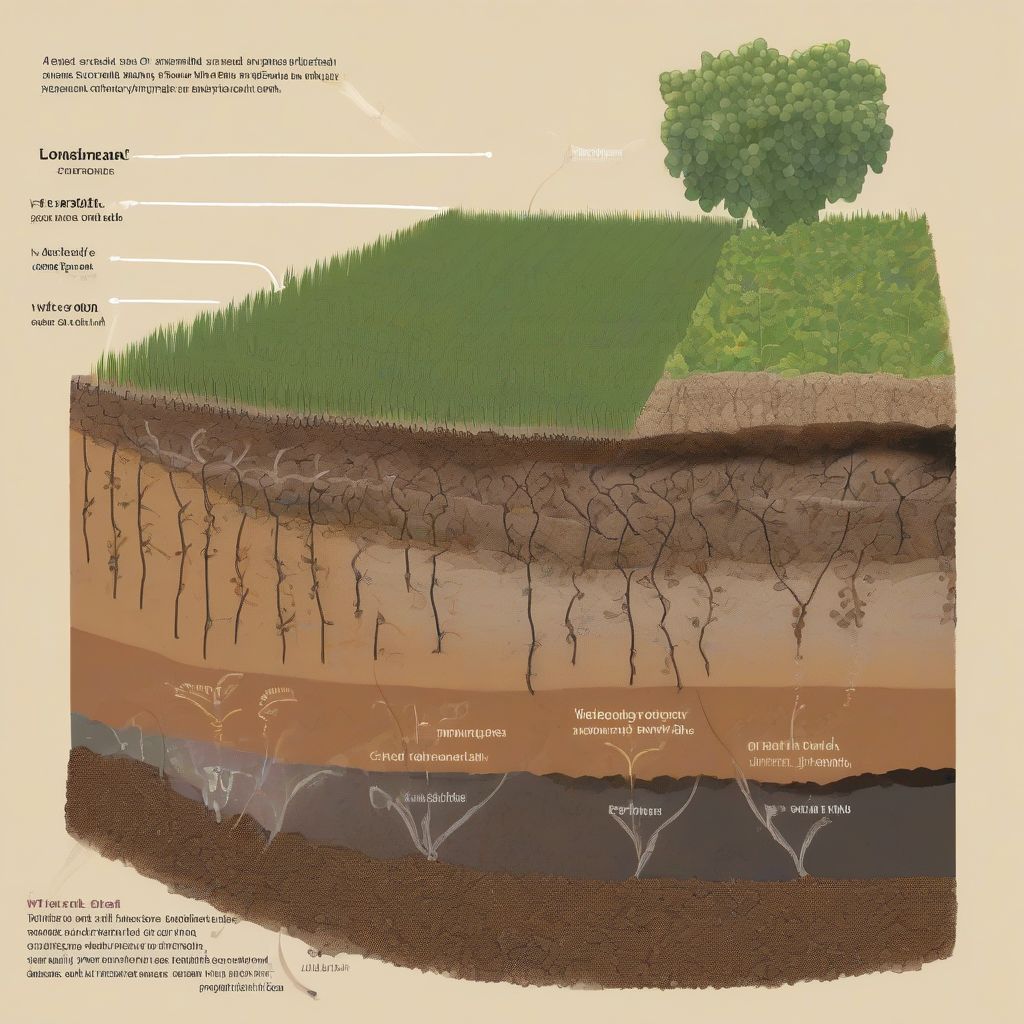Imagine yourself sipping a glass of wine, its complex aroma filling your senses. You taste hints of blackberry and vanilla, with a subtle earthy finish. Have you ever wondered where these flavors originate? While winemaking techniques undoubtedly play a crucial role, the answer lies much deeper – literally. It’s the soil, the very foundation of the vineyard, that imparts a unique character to the grapes and, ultimately, the wine.
The Foundation of Flavor: Understanding Soil’s Role
In the world of wine, we often hear the term “terroir” thrown around. It encompasses everything that influences a wine’s personality – climate, topography, and crucially, soil. Soil acts like a fingerprint, making each vineyard site unique.
But how does dirt contribute to something as elegant as wine? It’s all about the interplay of several factors:
1. Drainage and Water Retention: A Balancing Act
Think of soil as a sponge. Some soils, like gravelly ones, are like coarse sponges, draining water quickly. This forces vines to dig deeper for water, resulting in grapes with concentrated flavors. On the other hand, clay soils are like dense sponges, holding water for longer periods. This can lead to more diluted flavors but often contributes to fuller-bodied wines.
2. Nutrient Provision: A Delicate Diet
Just like us, vines need a balanced diet to thrive. Soil acts as their pantry, providing essential nutrients like nitrogen, potassium, and phosphorus. However, too much of a good thing can be detrimental. For instance, overly fertile soils can result in overly vigorous vines that prioritize leaf growth over grape production. This is where leaner soils, often found in renowned wine regions, come into play, forcing the vines to focus their energy on producing flavorful grapes.
3. Heat Regulation: The Sun’s Influence
Ever notice how dark-colored clothes absorb more heat on a sunny day? The same principle applies to soil. Darker soils absorb more heat, creating a warmer microclimate for the vines. This is particularly important in cooler regions, helping grapes achieve optimal ripeness. Conversely, lighter soils reflect sunlight, moderating temperatures and preserving acidity in warmer climates.
 Different Types Of Vineyard Soil
Different Types Of Vineyard Soil
World-Renowned Examples: Soil Shaping Wine Regions
To truly grasp the impact of soil, let’s take a trip around the globe, exploring how specific soil types define some of the world’s most celebrated wine regions:
1. Burgundy, France: The Power of Limestone
Burgundy, home to some of the most sought-after Pinot Noir and Chardonnay, is a prime example of soil’s influence. The region’s prized vineyards are planted on limestone-rich slopes. This porous, well-drained soil forces vine roots to burrow deep, extracting minerals that contribute to the wines’ complex aromatics and age-worthiness.
2. Bordeaux, France: A Tapestry of Gravel
Across France, in Bordeaux, we encounter a different soil story. Here, gravelly soils dominate, particularly in the famed Médoc region. These well-drained soils are perfect for Cabernet Sauvignon, promoting water stress that leads to smaller berries packed with intense flavor.
3. Tuscany, Italy: The Elegance of Clay
Venture to Tuscany, the heartland of Sangiovese, and you’ll encounter clay-rich soils, especially in regions like Montalcino and Chianti Classico. These soils, while challenging to work with, impart structure and firm tannins to the wines, resulting in powerful, age-worthy expressions of Sangiovese.
Beyond the Bottle: Why Soil Matters to Wine Lovers
Understanding the role of soil not only deepens our appreciation for the complexity of wine but also empowers us to make more informed choices.
When you pick up your next bottle, take a moment to consider the soil it came from. Look for clues on the label, like the mention of limestone, gravel, or clay. These are hints of the terroir, the unique combination of elements that have shaped the wine in your glass.
Uncorking the World of Wine
So, the next time you enjoy a glass of your favorite wine, remember that it’s more than just a beverage—it’s a reflection of the earth itself. From the drainage properties of gravel to the heat retention of dark soils, each element plays a crucial role in shaping the character of the wine we love.
What are your thoughts on the fascinating relationship between soil and wine? Share your experiences and favorite wine regions in the comments below!
- Hardcover Book
- Puckette, Madeline (Author)
- Puckette, Madeline (Author)
- English (Publication Language)
- Want to drink better wine? Take better notes with Wine Folly's Wine Journal!
- Wine diary features instructions and guided tasting notes using the 4-step tasting method developed by wine critics and sommeliers
- Speak confidently about wine in any situation. Learn how to identify wine flavors and where they come from using the wine aroma lexicon.
- Find wine flavors quickly and easily. The aroma chart set includes four wine aroma wheels for red, white, rosé, and sparkling wine.
- 20 Disposable Placemats (12" x 16"), designed and printed in the USA
- Tasting Instructions and enough room for consistent notes of 80 different wines to help make you an expert taster
- Hardcover Book
- Puckette, Madeline (Author)
- Keep your wine glasses, eyewear, and camera lenses sparkling for years to come with this excellent quality microfiber polishing cloth
- Eyeglass quality fine microfiber cloth, with hemmed edges for tear resistance
- Custom size fits perfectly alongside your phone
- Better notes with the included tasting card










